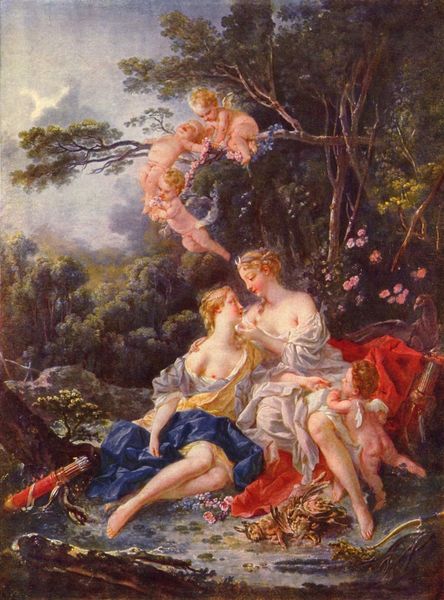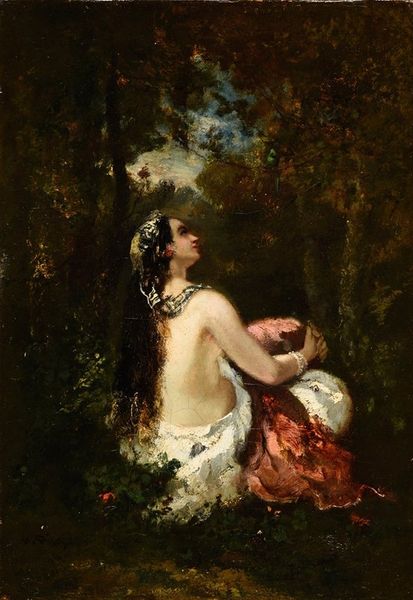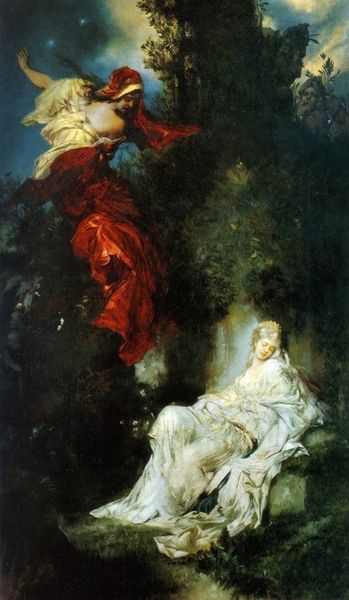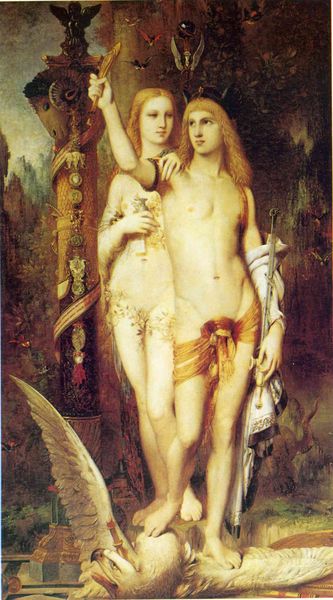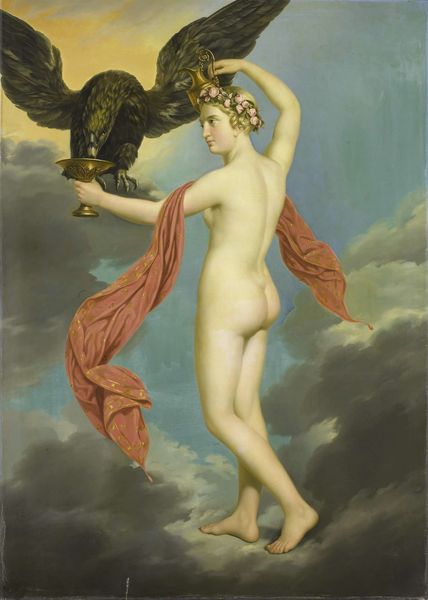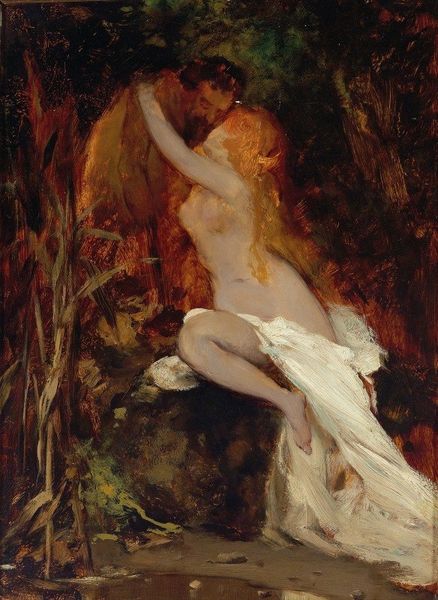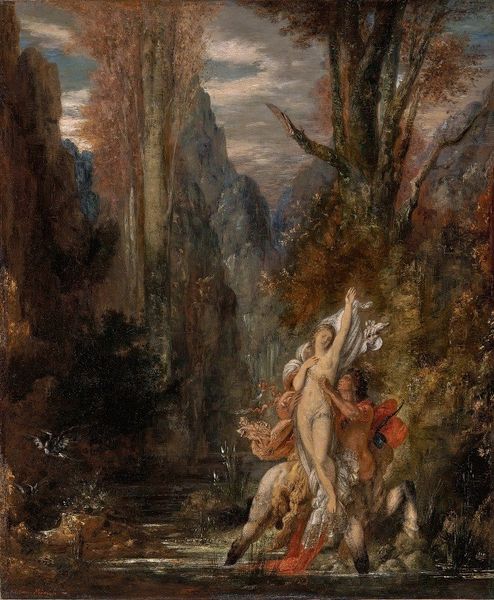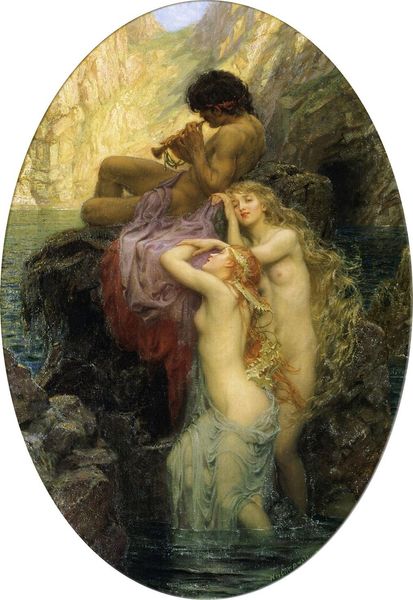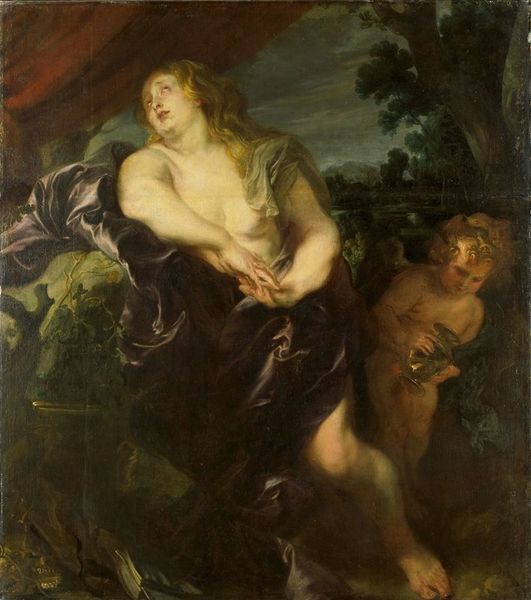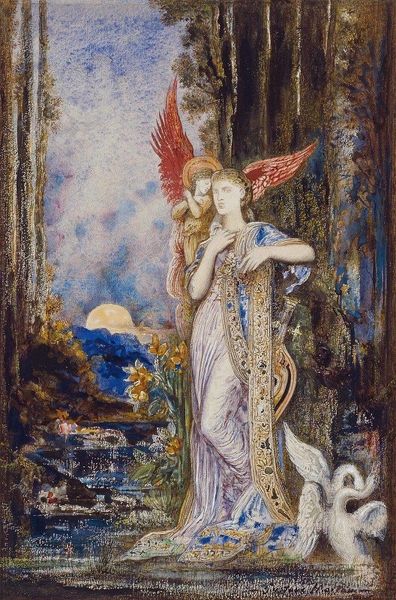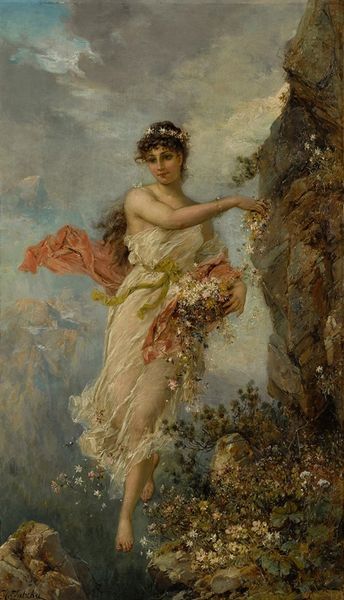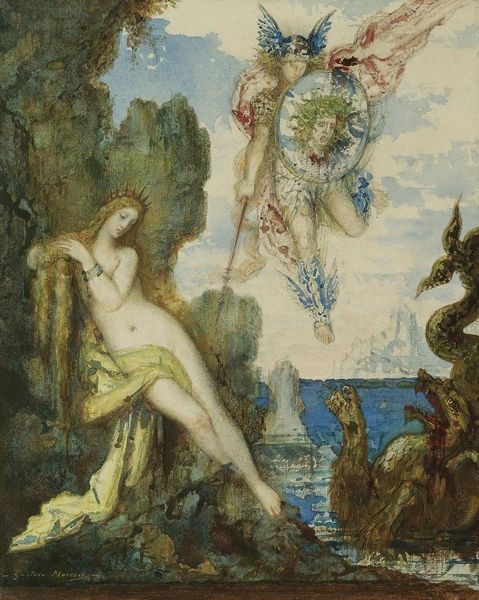
painting, oil-paint
#
portrait
#
allegory
#
painting
#
oil-paint
#
landscape
#
figuration
#
oil painting
#
classicism
#
romanticism
#
history-painting
#
academic-art
#
nude
Copyright: Public domain
Curator: Herbert James Draper's oil painting, titled “Art and the Jade”, immediately strikes me with its strange allegorical scene and interesting mix of Romantic and Academic styles. Editor: I must admit, I find my eye drawn immediately to the central female figure. The luminosity of her skin, juxtaposed with the deep reds and flowing whites of her drapery—it’s quite striking! The softness of the brushstrokes is what makes this interesting to me. Curator: Well, Draper certainly knew how to play to the market. Works such as these allowed late-Victorians to express an engagement with pagan myth and fantasy without ever really challenging their social norms. This kind of soft eroticism helped to secure his position within London’s artistic establishment. Editor: I’d agree that it's tempting to immediately jump to the painting's reception as a social document. But I think this would cause you to potentially skip over a more important engagement with what he's actually *doing* as a painter. It isn’t all soft eroticism for social consumption—look at the symbolic tension of the wheel beside the more realistic rendition of the musician with a score in his hand. Curator: Very good point, the relationship between art and the world around is always changing and impacting each other. While on one hand artists like Draper are shaped by and respond to the norms of society, they in turn reshape perceptions by feeding into these broader conversations and desires. I'd say here this work is allegorizing a shift in the British social consciousness, towards embracing decadent romantic ideas and aesthetics... which Draper helped to bring forth, obviously for monetary reward but also in line with his beliefs and ideas. Editor: Still, I see his precise attention to detail, like the way the light catches the leaves, which shows an intent that extends beyond the purely conceptual and historical considerations. What seems very thought through, is not at all executed without focus on surface and composition. It feels like the painting's depth and character are in these carefully and meticulously presented forms. Curator: Ultimately, these conversations can run both parallel to and against each other to establish a network of ideas. Draper’s work presents us with a curious lens through which to understand these exchanges within both the aesthetic and sociopolitical contexts of late-Victorian England. Editor: I can’t deny that engaging with its historical context allows me a much richer and diverse understanding of how this painting manages its own space of textures, shapes and colours, without either completely overlapping the other.
Comments
No comments
Be the first to comment and join the conversation on the ultimate creative platform.
